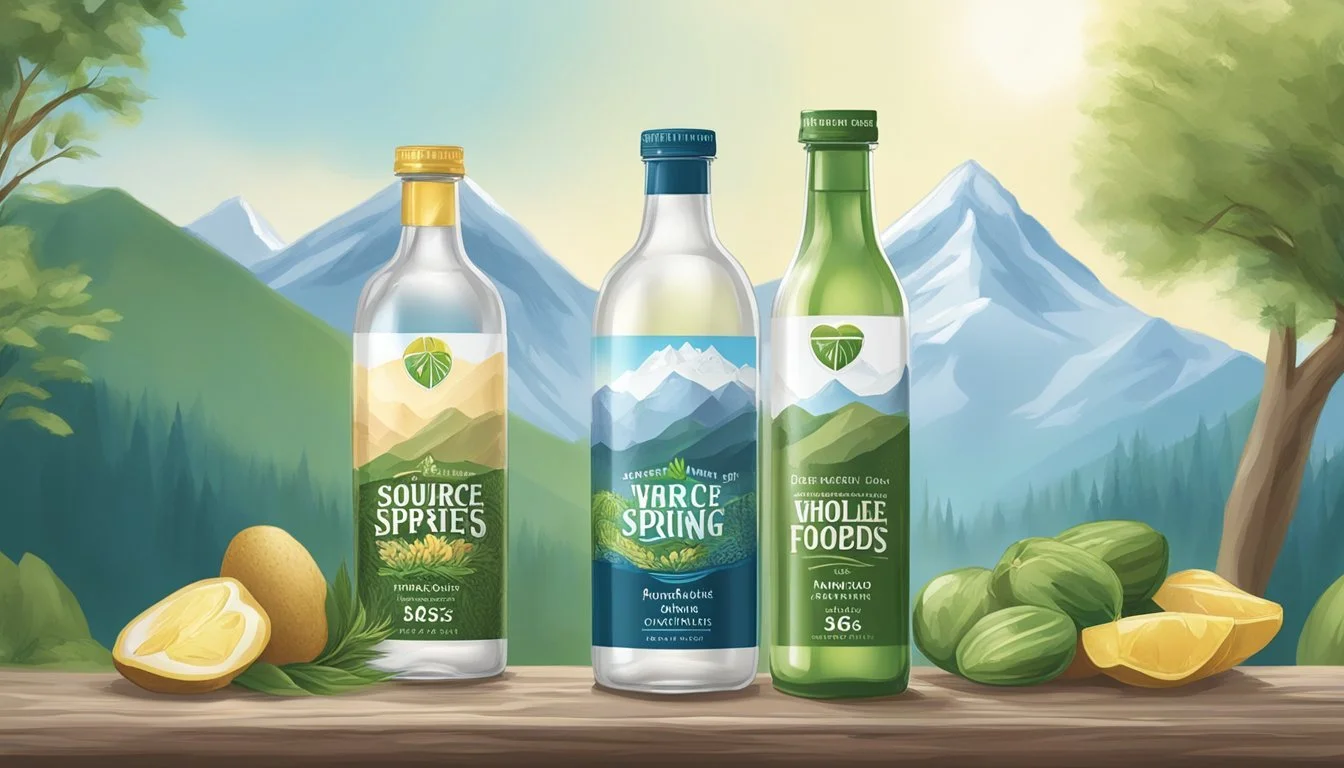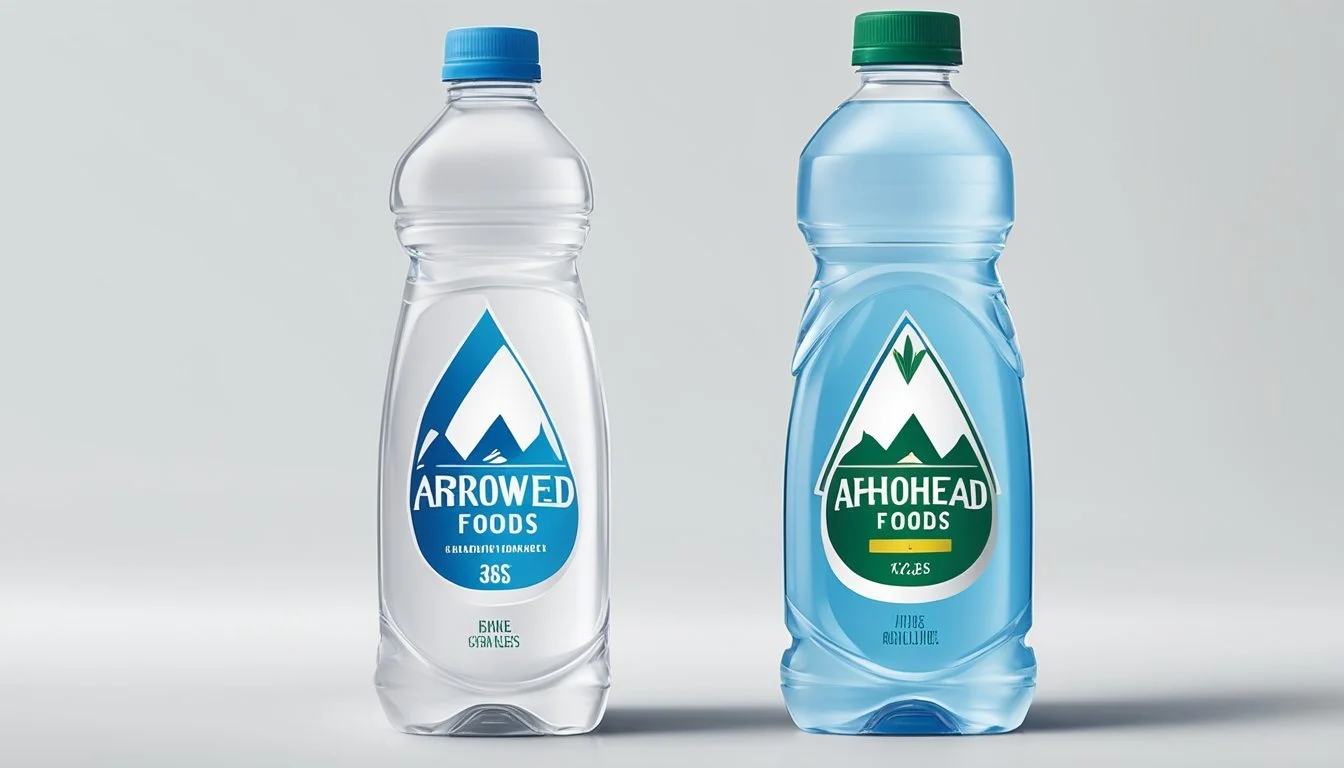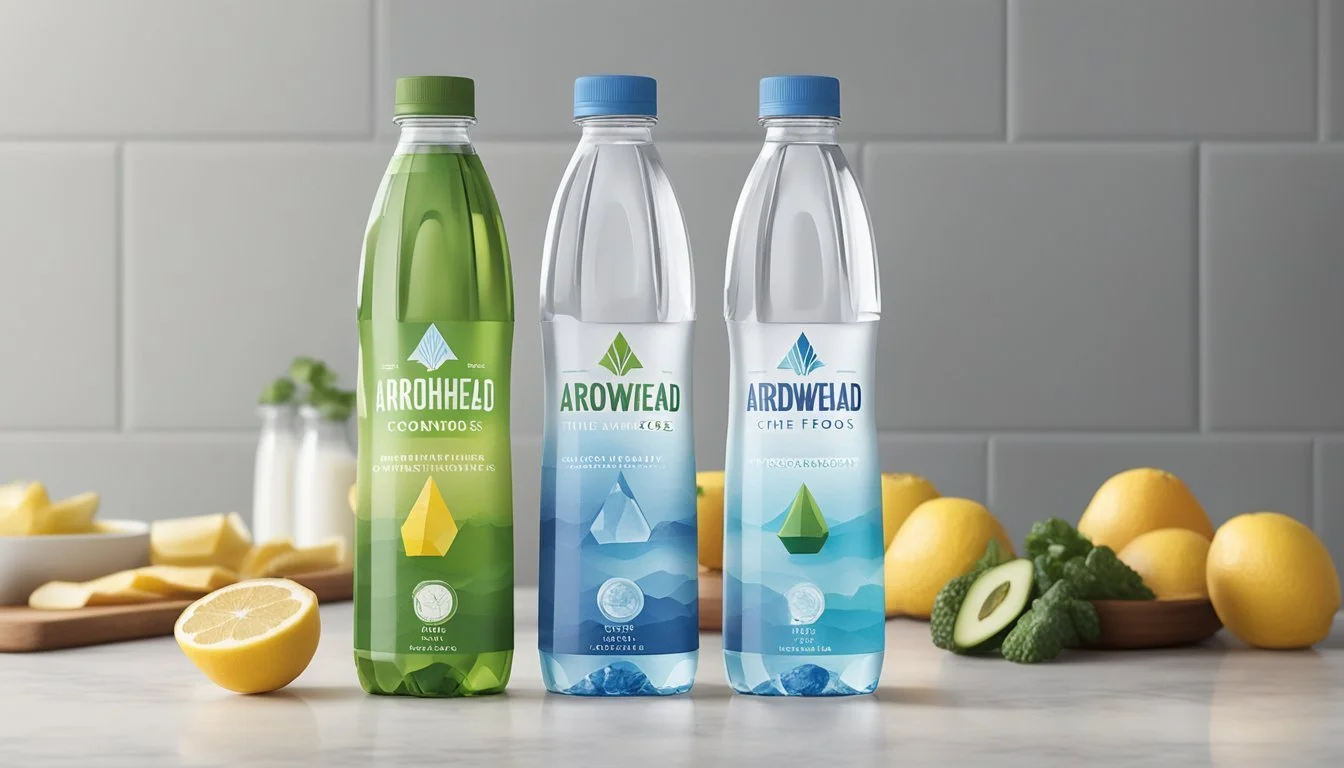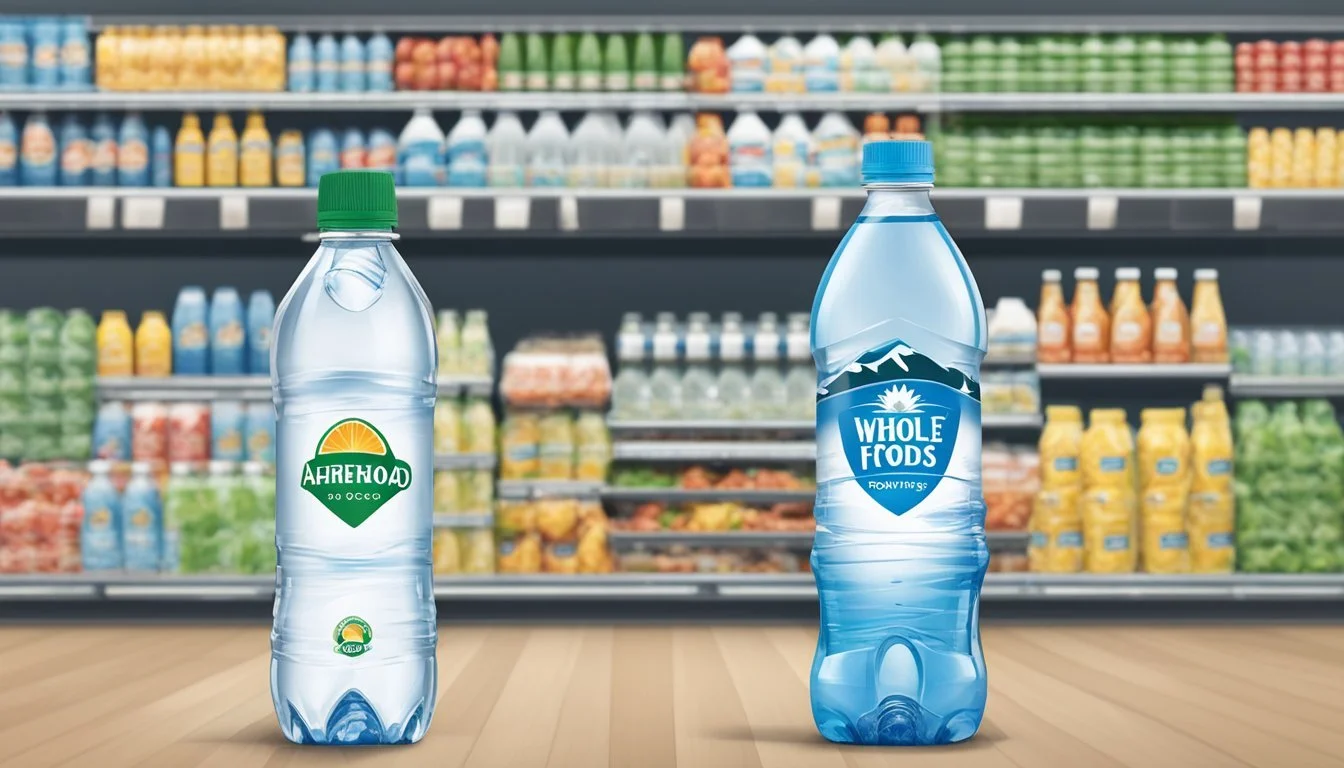Arrowhead vs. Whole Foods 365
Which Bottled Water is Better? Comparison and Guide
Deciding between Arrowhead and Whole Foods 365 bottled waters can seem daunting given the multitude of options available. Each brand presents its unique qualities, which can make a significant difference to the discerning palate. For those seeking a crisp, clean taste, Arrowhead stands out with its natural spring water sourced from carefully selected mountain springs.
On the other hand, Whole Foods 365 offers an accessible spring water option that some may find comparable to purified varieties. With Whole Foods 365, one may encounter varied opinions, particularly regarding its aftertaste, which has been described as dry and occasionally sour. This contrast highlights the importance of personal preference when choosing bottled water.
In essence, Arrowhead generally offers a more satisfactory experience for those prioritizing a refreshing and natural taste, while Whole Foods 365 provides a cost-effective alternative that may suit less particular drinkers. This analysis sets the stage for a detailed exploration of both brands' characteristics and which might best quench your thirst.
Overview of Bottled Water
Bottled water, available in various types and from numerous brands, caters to different preferences and needs. Key distinctions include the source and processing method, influencing taste and health benefits.
Types of Bottled Water
Spring Water: Sourced from natural springs, often boasting a crisp taste. Examples include Evian and Poland Spring. Arrowhead and Whole Foods 365 are also notable spring water brands.
Mineral Water: Contains dissolved minerals from natural springs, offering health benefits. Perrier and Fiji are popular options.
Purified Water: Undergoes processes like distillation or reverse osmosis to remove impurities. Aquafina and Dasani are common choices, ensuring purity and a neutral taste.
Sparkling Water: Carbonated for a fizzy sensation, with brands like La Croix and Perrier leading the market.
Artesian Water: Drawn from wells that tap into confined aquifers. Fiji is a renowned brand in this segment.
Importance of Brand Choices
Choosing a bottled water brand impacts taste experience and health. Each brand has unique qualities based on water source and treatment methods.
Arrowhead, known for its spring water, offers a natural taste appreciated by many. Whole Foods 365 provides affordable spring water, though some note a dry aftertaste.
Brands like Nestlé, Smartwater, and Essentia cater to varied preferences, from enhanced mineral content to high purity.
Consumer Reports reveal concerns about PFAS chemicals in some brands, urging informed choices. Considering individual needs and brand reputations helps in selecting the best option for hydration.
Water Quality and Standards
Arrowhead and Whole Foods 365 both adhere to specific standards and regulations to ensure their water is safe for consumption. This includes rigorous testing for contaminants and chemicals to prevent health risks.
Safety Regulations and Testing
The FDA and EPA set standards for bottled water and tap water, respectively. Both bodies require regular testing to ensure water meets Safe Drinking Water standards.
Bottled water like Arrowhead and Whole Foods 365 must comply with the FDA’s regulations, which include testing for PFAS chemicals, heavy metals such as lead, arsenic, cadmium, and mercury. Water companies are required to report their findings and take action if contaminants exceed legal limits.
Consumer Reports has highlighted that the frequency and thoroughness of these tests play a critical role in maintaining water quality. Regular audits and third-party testing ensure compliance and safe levels of various compounds.
Contaminants and Chemical Analysis
Testing for contaminants in bottled water focuses on detecting both chemical and biological hazards. Key chemicals of concern include PFAS, which are linked to several health issues. Consumer Reports found these chemicals in several brands, stressing the importance of choosing bottled water wisely.
Apart from PFAS, testing also looks for heavy metals. The presence of lead, arsenic, cadmium, and mercury can pose serious health risks if concentrations are above the EPA’s legal limits. Arrowhead and Whole Foods 365 must provide water that is free from harmful levels of these metals, ensuring it is safe for regular consumption.
Water quality reports, often available on the company websites, reveal the levels of contaminants and the measures taken to mitigate any risks. Consumers are encouraged to check these reports to better understand the safety of their bottled water choices.
Health and Environmental Impact
When assessing bottled water brands like Arrowhead and Whole Foods 365, it's essential to consider both health implications and ecological impacts. Each of these factors directly influences consumer choice and long-term sustainability.
Health Risks and Benefits
Bottled water often claims benefits such as containing natural minerals or being purified to enhance health. Arrowhead's mountain spring water is marketed as natural spring water, potentially offering minerals like calcium and magnesium, beneficial for bones and muscles.
Whole Foods 365 spring water, while accessible, has been reported to taste similar to purified tap water. This could mean fewer natural minerals. Additionally, both brands must comply with the Environmental Protection Agency's standards for contaminant levels.
However, concerns about "forever chemicals" like PFAS in bottled water have surfaced. Testing revealed elevated PFAS levels, which are linked to cancer and developmental issues. This raises questions about long-term health risks and the transparency of bottled water brands.
Ecological Footprint of Bottled Water
The environmental impact of bottled water is significant. Packaging, transportation, and the plastic waste associated with bottled water contribute to global pollution. Arrowhead, offering mountain spring water, emphasizes its natural origins, but still relies on plastic bottles.
Whole Foods 365, also packaged in plastic, presents similar environmental challenges. Efforts to use BPA-free plastics address some concerns, but recycling rates remain low, exacerbating waste issues.
Sustainable alternatives like Boxed Water aim to reduce waste through biodegradable or reusable packaging. Nonetheless, both brands generate a considerable ecological footprint, highlighting the need for improved sustainability practices in the bottled water industry.
Switching to tap water or using reusable bottles reduces the environmental strain caused by single-use plastics, promoting a more eco-friendly hydration approach.
Source and Origin
Arrowhead and Whole Foods 365 bottled waters each draw from distinct sources and employ different purification processes, resulting in unique taste profiles and quality standards.
Natural Springs and Purification Processes
Arrowhead sources its water from multiple natural springs located in the United States, particularly in the Western region. These springs, such as those found in the San Bernardino Mountains, provide naturally mineral-rich water. Arrowhead focuses on maintaining the water's natural purity and taste by employing minimal processing. Their commitment to preserving the natural characteristics of the spring water is evident in their selective sourcing and stringent quality controls.
Whole Foods 365, on the other hand, offers spring water that, while labeled as such, has been scrutinized for its purification methods. Some reviews point out that it has a dry aftertaste, which may indicate extensive processing. The purification process for Whole Foods 365 involves multiple steps, including filtration systems and reverse osmosis, to ensure the removal of impurities. Despite being spring water, the end product may taste similar to purified water due to these comprehensive filtration methods.
Both brands emphasize the safety and quality of their products. Arrowhead, being a part of the Nestlé Waters portfolio, adheres to strict voluntary guidance and aims for undetectable levels of contaminants. Whole Foods 365 similarly ensures compliance with safety standards, but the differences in their sources and purification techniques offer distinct experiences for consumers.
Taste Profile Comparisons
This section explores the distinct taste profiles of Arrowhead and Whole Foods 365 bottled waters, focusing on flavor differences and specific characteristics like mineral content.
Flavor Differences in Brands
Arrowhead water is known for its mineral-rich taste, which can sometimes come across as slightly metallic or earthy. This is due to its natural spring source, which adds various minerals to the water, giving it a more complex flavor profile. Arrowhead's taste may appeal to those who prefer a more natural and robust water flavor.
Whole Foods 365 on the other hand, has a taste that is often described as clean and straightforward. Marketed as a spring water, its flavor is notably less complex compared to Arrowhead. Some reviewers mention a dry aftertaste, but it generally lacks the sourness or metallic notes found in more mineral-heavy waters.
In summary, Arrowhead offers a more mineral-centric taste, while Whole Foods 365 provides a simpler, cleaner drinking experience. The preference between these two will largely depend on individual taste buds and the specific flavor profile one seeks in bottled water.
Consumer Choice and Brand Perception
Consumer preferences for bottled water often hinge on factors such as taste, brand reputation, and perceived quality. Comparing Arrowhead and Whole Foods 365 provides insight into market dynamics and customer loyalty.
Market Presence and Customer Loyalty
Arrowhead has a long-standing reputation, particularly in the Western United States. It is recognized for sourcing water from natural springs and is widely available in stores and through various distribution channels. This accessibility contributes significantly to its loyal customer base.
Whole Foods 365, the private label brand of Whole Foods Market, targets a slightly different demographic. Its appeal lies primarily with health-conscious consumers and those who prioritize sustainability. Priced competitively, it attracts regular Whole Foods shoppers looking for affordability and quality.
Expert Opinions and Reviews
Experts often highlight the differences in taste and purity between brands. Arrowhead's water is typically praised for its crisp taste, attributed to its natural spring sources. However, reviews from Consumer Reports and investigative journalists sometimes point out variability in mineral content.
Whole Foods 365, though technically a spring water, is compared to more average purified waters by some critics. Consumer Reports detected sour notes and a dry aftertaste, which might affect consumer preference. Nonetheless, its commitment to transparency and ethical sourcing garners positive reactions from eco-conscious buyers.
Legislation and Industry Standards
Bottled water is subject to various regulations to ensure consumer safety and product quality. Both government oversight and corporate responsibility play crucial roles in maintaining these standards.
Government Oversight and Corporate Responsibility
The FDA sets regulations for bottled water similar to the EPA standards for tap water. These regulations cover contaminants, labeling, and processing.
Companies like Arrowhead and Whole Foods 365 must adhere to these rules to ensure their products are safe for public consumption. Regular testing and compliance with legal limits for contaminants such as PFAS are essential.
Effective corporate responsibility includes transparent communication about water sources and processing methods, adhering to both mandatory and voluntary guidance to maintain public trust.
Compliance with Legal Requirements
Compliance involves meeting legal limits for contaminants and adopting best practices in water sourcing and bottling. Brands must regularly test their products to conform to FDA and EPA standards.
Voluntary certification programs can also bolster consumer confidence. Arrowhead and Whole Foods 365 often participate in such programs to further demonstrate their commitment to safety and quality.
Strict adherence to these regulations ensures bottled water meets public health standards, minimizes health risks, and maintains consumer confidence. Regular updates from regulatory bodies and independent testing organizations keep these standards current and effective.
The Future of Bottled Water
As environmental concerns and health awareness rise, the bottled water industry is evolving to meet the demands of a knowledgeable and discerning consumer base.
Emerging Trends in Consumer Preferences
Consumers are increasingly favoring products with sustainability in mind. Brands are innovating with eco-friendly packaging. For instance, some companies are using biodegradable bottles and others are focusing on lightweight plastics to reduce their environmental footprint.
Health-focused choices are also on the rise. There's a significant demand for waters with added minerals like Icelandic Glacial and mineral waters that claim various health benefits. Sparkling waters and carbonated options continue to grow in popularity, as companies like Acqua Panna diversify their product lines.
Transparency and label accuracy is another key area. Consumers want to know what's in their bottled water, pushing for clearer labeling on contents like PFAS chemicals and other potential contaminants. Natural spring water sources are highly sought after, reflecting a preference for purity and origin authenticity.








